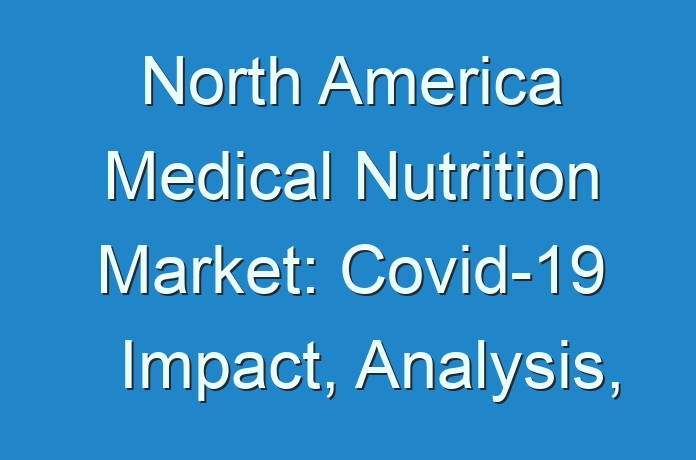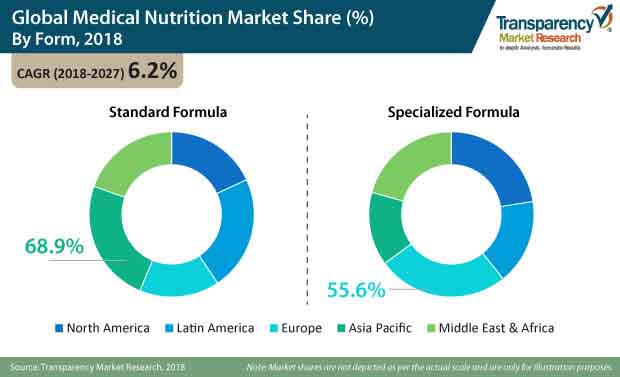
Medical Nutrition Market: Complementarity of Pharmacology & Nutrition to Augur Well for Growth
As old health rules are overturned, a physiological approach that starts from health in place of disease is gaining high emphasis. Hippocrates quote, ‘Let food be thy medicine and medicine be thy food’ has been put into practice, as individuals are considering medical nutrition and food for enhancing health and treating disease, despite the developments procured in the field of medical science.
The idea of disease prevention to avoid or simplify complicated therapeutics is supported by the convergence of the pharmaceutical and food industry. In the past years, literatures have stated that the gap between nutrition science and pharmacology has been narrowing, a progress stirred by both disciplines. The only substances considered pharmacologically active in the past were drugs. Progressing on these terms, medical nutrition, the new treatment pattern entails on the fact that nutrients can have an intense effect on metabolic, immunological and other pathophysiological processes of unhealthy patients.
Request A Sample – https://www.transparencymarketresearch.com/sample/sample.php?flag=S&rep_id=1704
TMR, in its new research study, reveals compelling insights into the medical nutrition space, to assist readers with data-driven decision making. According to the TMR study, revenues from the medical nutrition market closed in on a valuation of over US$ 13,000 Mn in 2018. This growth is attributed to the growing awareness of chronic diseases among consumers coupled with the various initiatives and programs commenced for the effective prevention and control of these diseases. This has led to the growing inclination towards medical nutrition supplements.

Developments in biotechnology has further resulted in the revolution of the medical nutrition market as key manufacturers are concentrating on research and development of improved and personalized medical nutrition offerings. Moreover, the development of disease-specific specialized solution for the medical nutrition markets is also observed, particularly in the developed economies.
Key Trends Revolutionizing the Medical Nutrition Landscape
From industry giants to first-movers, enterprises have long been in mercy of revolutionizing industry trends. Key trends shaping the medical nutrition landscape are discussed below.
- Digestive Wellness – A Win-Win for Both Consumers & Manufacturers of Medical Nutrition
The digestive wellness trend embodies the increasing awareness around new ingredients, nutritional products which are based on the public health recommendations and science. This is led to the reduction of sugar content of foods. According to reports, a large part of the consumer base prefers the consumption of health-improving ingredients through food, as consumers care about nutrition with which they gain a control over their health and lifestyle. Foods that help reduce the gastrointestinal symptoms including the ‘free-from’ foods, ‘added-benefits’ ingredients, fermented foods, prebiotics, and probiotics are gaining focus with this trend.
- Personalized Medical Nutrition – Consumers Gain Access to Tailored Medical Nutrition
Driven by key developments in technology along with the continual progress attained by the field of science, the personalized medical nutrition has become much more than just a concept. Medical nutrition solutions providers are incorporating multidisciplinary approach to set up centers that focus on development of nutritional products that cater to specific needs. The future of personalized medical nutrition is cited to be fully individualized backed with constant monitoring of personalized information including gut bacteria, biomarkers or genes.
- Emphasis on Clean Label Ingredients Sustains
There is a major demand witnessed for the foods perceived to be free-from, clean, and natural allied to the growth in healthy eating. Studies have found that the label claims are likely to influence the buying decisions of consumers on a large scale as the need for authenticity and transparency in foods and beverages has witnessed a significant growth. In addition, key regulations pertaining to food product labelling are further necessitating medical nutrition product manufacturers to concentrate on this progressive trend.
Request for Covid-19 Impact Analysis @ https://www.transparencymarketresearch.com/sample/sample.php?flag=covid19&rep_id=1704
Winning Strategies of Competitors:
The medical nutrition market players continue to progress in the medical nutrition landscape with a key focus on investments. Major investments are carried out in areas of research and development, acquisition of local medical nutrition providers and expansion in promising regions. A number of partnerships and collaborations are also likely to foster the growth of businesses.
North America reflects key growth opportunities for the medical nutrition market players and is expected to remain the leading region for medical nutrition market through 2026. Europe is also one of the attractive regional markets for the medical nutrition. Companies are witnessing various growth opportunities in both North America and Europe owing to the healthy demand for preventive medical nutrition supplements from these regions which are attributed to the high prevalence of malnutrition in older adults in geriatric care facilities and hospitals. Asia Pacific excluding Japan is estimated to a high growth market, opening key opportunities for the companies.
Formula type and mode of delivery have emerged as lucrative segments in the medical nutrition market. In formula type, the specialized formula has been in demand over the years. However, the growth of standard formula is high on account of the rising consumption of medical nutrition products for consumer’s general well-being. The enteral medical nutrition is the most preferred mode of delivery by consumers. However, people suffering from digestive problems and GI tract infections are advised to consume medical nutrition by parenteral mode of delivery in which the supplements are given to the patients intravenously. As a result of this, although the demand for parenteral medical nutrition will not grow at a high rate, it is expected to remain a very attractive segment. Various medical nutrition companies are cashing on the attractiveness of the parenteral formula, incorporating newer strategies to gain profits.
For More Info View @ https://www.transparencymarketresearch.com/casestudies/food-and-beverages-case-study
Key developments carried out by leading players in the medical nutrition market:
- A leading medical nutrition product manufacturer, Fresenius Kabi UK announced the expansion of its existing capabilities in Runcorn, Cheshire, with which it further boost the supply of medicines for the care and therapy of chronically and critically ill patients. This expansion is backed with an investment of around € 9.5 million.
- Another company operating in the medical nutrition market, Baxter International Inc. recently announced the US launch of Clinolipid, which is a proprietary olive oil-based lipid emulsion which marked the growth of Baxter’s lipid portfolio.
- A leading medical nutrition provider Nestle SA improves its capabilities aligned with the personalized nutrition trend with a new program that commenced in Japan. The program brings together DNA testing, modern trend of social media posting, and artificial intelligence to formulate personalized diet and nutrition.
- Cambrooke Therapeutics Inc., and a specialty medical nutrition provider Trovita Health Science, recently announced a joint partnership for sales and development of ENU Nutrition meal replacement shakes. According to Cambrooke officials ENU provides them the opportunity to enter into new areas of therapeutic and medical nutrition and provide a foundation for a strong stream of nutrition innovations to aid in the growth of ENU customers.
The medical nutrition market is consolidated market as a significant market share captured by leading players in the medical nutrition market. The medical nutrition product manufacturers are focusing on innovating products by developing R&D facilities that help scrutinize the specific consumer requirements, resulting in new product launches in a short time span. Merger and acquisition strategy has emerged key strategy for medical nutrition market players. Expansion of capacity with the collaboration of R&D departments, implementation of developments programs, and more are emerging as a key focus areas of the medical nutrition market players.
The medical nutrition products primarily witness high demand from the geriatric population. However, the utilization of medical nutrition by adults for the purpose of general well-being is creating wealthy opportunities for companies. Companies operating in the medical nutrition market can expect progressive growth with investments in the specialization of the products by launching medical nutrition offering that target specific conditions. As consumers are ready to pay premium prices, the medical nutrition business will sustain progress in the near future. Moreover, the increasing illness among consumers globally could lead to higher sales.
Differentiation strategy is laying the foundation of a significant market foothold for various medical nutrition market players. While established medical nutrition market players can invest in R&D activities to manufacture innovative products, similar approach can be implemented by new entrants. Premix ingredients are in high demand owing to urbanization, resulting in a demand for less time consuming alternatives that match the fast-paced lives. Medical nutrition companies can direct their efforts towards these transforming consumer requirements to further benefit from these profit gaining opportunities. Companies providing medical nutrition offerings are recommended to increase their global presence and capture emerging markets such as the APEJ and the MEA, that exhibit growth potential for the medical nutrition business.





